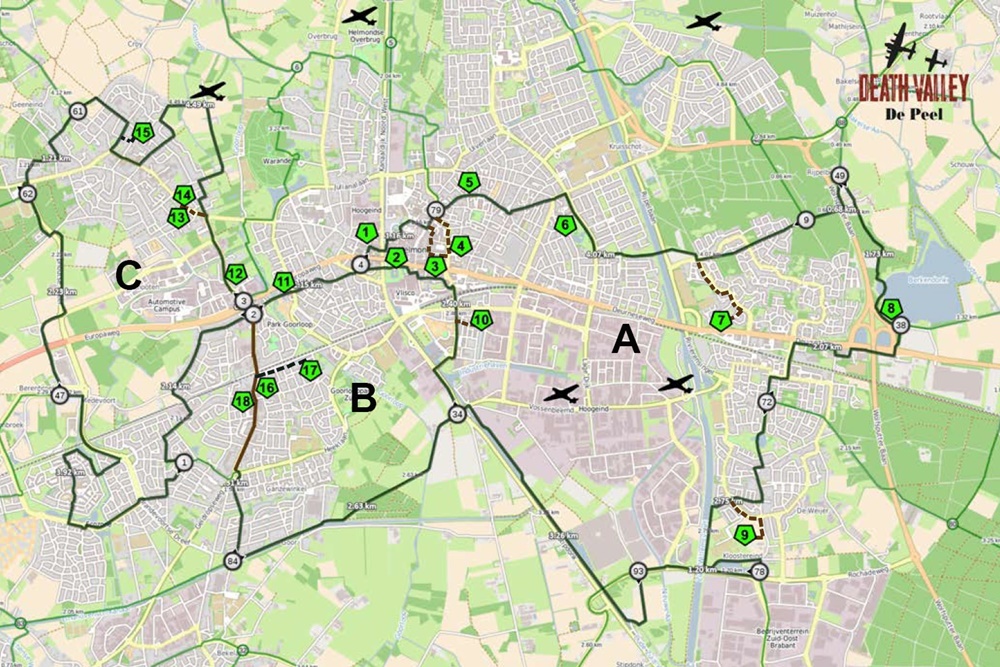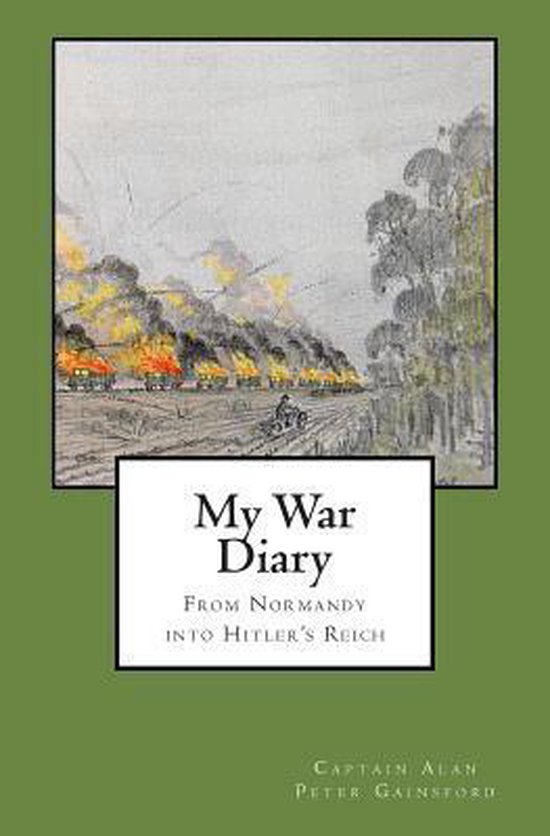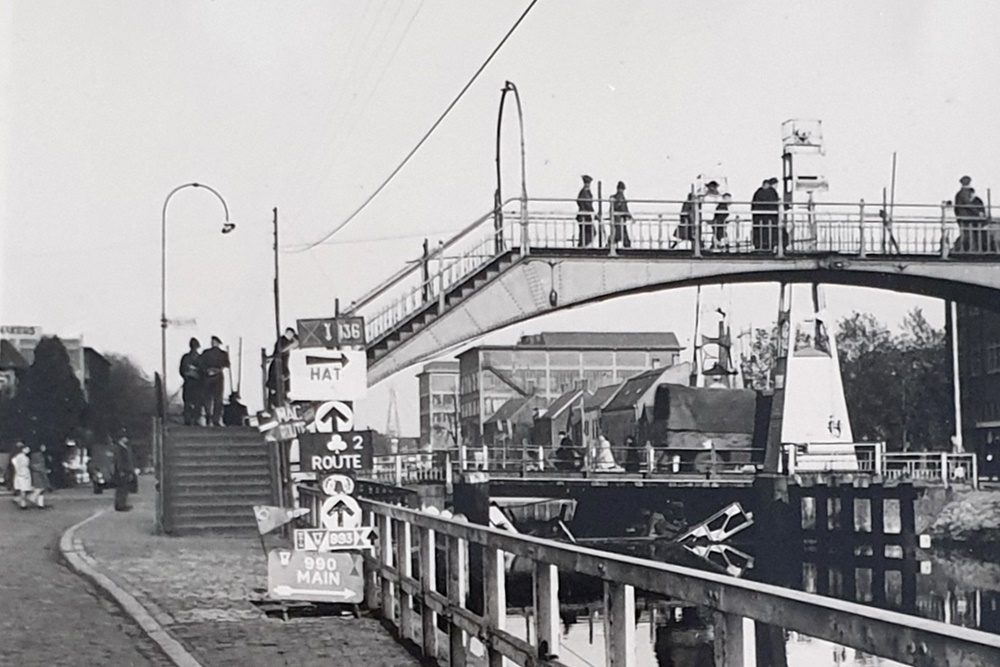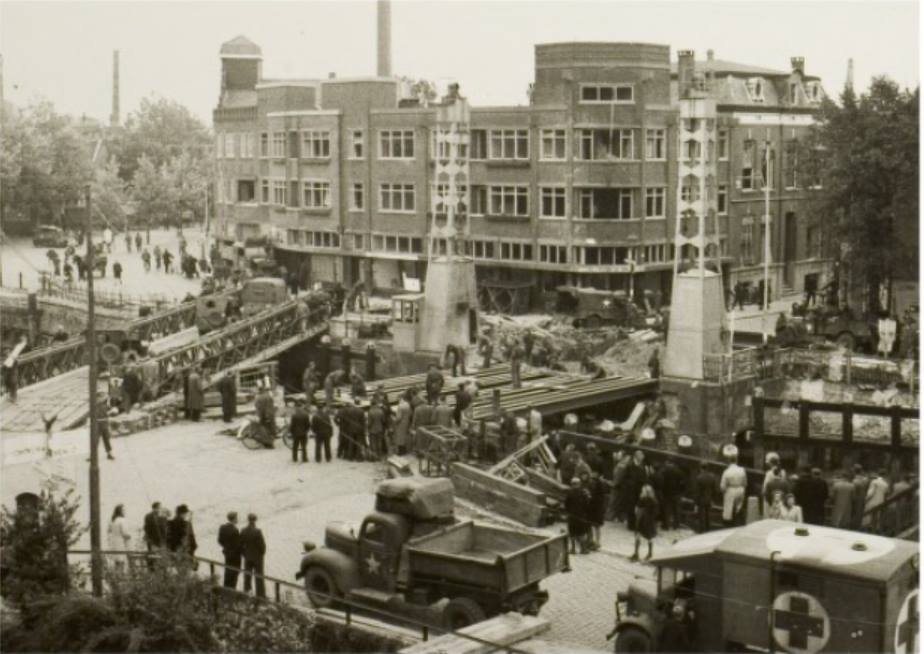Cycling Route Death Valley De Peel - Veestraatbrug (#2)
Veestraatbrug
The Helmond section of the Zuid-Willemsvaart was completed on 1 July 1825. A drawbridge will be placed at the end of the important thoroughfare Veestraat / Steenweg. The identified Veestraat bridge was modernized and widened in 1923.
To complicate the advance of the German army on May 10, 1940, the Dutch army has all bridges over the Zuid-Willemsvaart blown up. After the invasion of the Germans, a ship bridge is temporarily constructed from existing ships in the canal.
On September 22, 1944, the restored Veestraat bridge flies into the air again, now at the hands of the German army. The western and eastern part of Helmond is separated by acts of war and the military dividing line is the Zuid Wilemsvaart. There is fighting back and forth and the inhabitants of Helmond take refuge in the shelters. Still, there are deaths and injuries in the city.
The British 2nd army approaches Helmond via Someren and Asten and enters the city on September 25, 1944, around 11.00 from Deurne, via the eastern Molenstraat. After the liberation of the city, a bailey bridge is temporarily constructed. In 1947, the Veestraat Bridge was officially put back into use. The part of the canal, which is the Veestraat bridge, has no official function for shipping since 1993.
General
The bicycle route in Helmond is a collaboration between Death Valley De Peel of the Museum Klok & Peel, Heemkundekring Helmont, Stichting Helmond September 25, 1944 and TracesOfWar.nl. The route consists of a number of points, not all of which have a sign.
Do you have more information about this location? Inform us!
Source
- Text: TracesOfWar
- Photos: Jeroen Koppes (1), Martin Damen (2), Death Valley De Peel (3)
Related books
"New" photo of the Veestraatbrug in Helmond
For a number of years I have been researching World War II in Helmond . One is always looking for new material that is not yet known in Helmond historiography. This could be anything; diaries, letters or photos.
Nearby
Point of interest
- Tribunaal Helmond - Helmond
- Cycling Route Death Valley De Peel - Struikelstenen Hoogeindsestraat 4 (#10) - Helmond
- Cycling Route Death Valley De Peel - Mierloseweg 130a - Jewish Hider in Huize 'De Raymaert' (#11) - Helmond
Monument
- Royal Norfolk Memorial - Helmond
- Indo-Moluccan Memorial - Helmond
- Liberation Memorial Mierlo-Hout - Helmond
Cemetery
- Dutch War Graves Catholic Cemetery H. Lambertus - Helmond
- Dutch War Graves Protestant Cemetery Helmond - Helmond
- Commonwealth War Graves Helmond - Helmond
Remembrance Stone
- Memorial Stones Koppel family - Helmond
- Memorial Stones Lobe Family - Helmond
- Memorial Stone Coppel Family - Helmond
Crash site
- Crash Site Messerschmitt Me 262A-2a 170120 - Helmond
- Cycling Route Death Valley De Peel - A Messerschmitt in Aarle-Rixtel (#2) - Aarle-Rixtel
- Crash location Typhoon RB225 - Helmond







